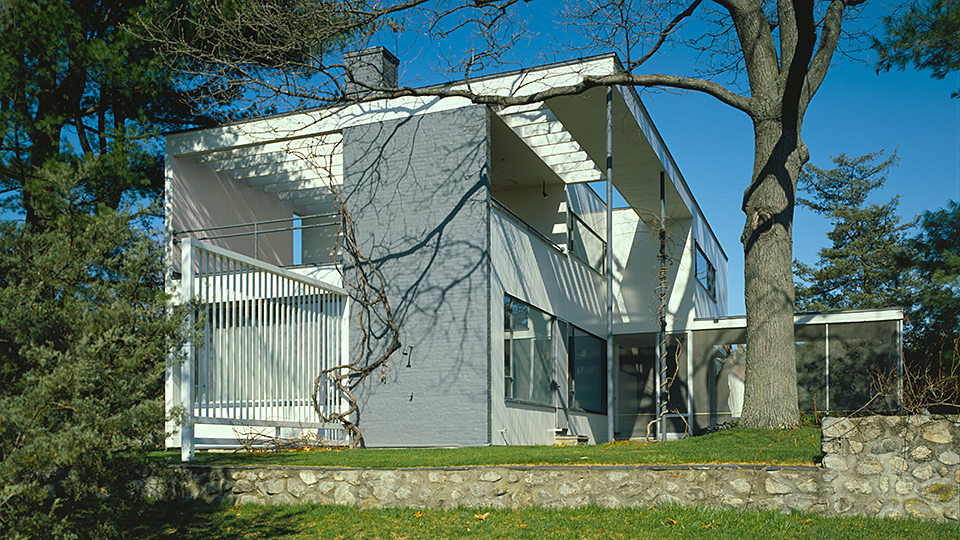Bauhaus Style – popular 1920s-1930s

Photo: Walter Gropius House, circa 1938, 68 Baker Bridge Road, Lincoln, Middlesex County, Massachusetts. Photographed by Jack E. Boucher, 1988, Historic American Buildings Survey [HABSMA-1228 ], memory.loc.gov, accessed June, 2021.
More Architectural House Styles
(
Bauhaus Style, First Phase:
Weimar, Germany (1919-25)
Named Bauhaus [†] ("House of Building"), the new school resulted from the merger of the Grand Ducal School of Arts & Crafts and the Weimar Academy of Fine Arts, representing the first flush of a new republic (the "Weimar Republic," following a revolution in 1918 and replacing the imperial form of government with a liberal democracy, voted in by a constitutional assembly that met in Weimar in 1919). Architect Walter Gropius was the founding director, yet initially there was no instruction in architecture (but a strong idea of the "total" work of art).
Second and Third phase:
>Dessau (1925-32) and Berlin (1932-33)
With a new building inaugurated in the industrial town of Dessau in 1925, architecture becomes part of the curriculum. Hannes Meyer is named director after Gropius resigns in 1928, and turns towards leftist politics and trade unionism in an attempt to bring Bauhaus designs into production. Ludwig Mies van der Rohe becomes director when Meyer is fired in 1930, he moves the school to Berlin in an attempt to work with the Nazi government.
The school was closed by its own leaders in 1933 after the Nazi government cut off all funding. Exiles spread out into various countries in the Allied network during the war.
The legacies of the Bauhaus, 1933-present
- Soviet Union in the late 1930s, as students loyal to the Communist Hannes Meyer flee to Moscow following his firing
- Tel Aviv in the 1930s-40s, as exiled Jewish students from the Bauhaus build 4,000 modernist buildings in British Palestine
- U.S.A. during and after WW2 (Harvard, Yale, Black Mountain College, MIT, the "New Bauhaus" in Chicago)
- Postwar West Germany (Hochschule für Gestaltung, Ulm)
- more diffusely, Brazil and Argentina, as technocratic aesthetics were promoted during the 1950s and '60s as part of "developmentalism" in Latin America
† MIT Open Courseware, Bauhause, notes, 2012/2013, ocw.mit.edu, accessed June, 2021.